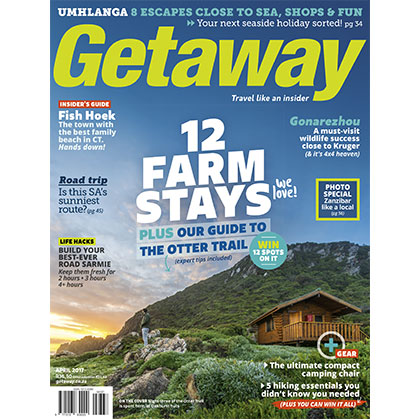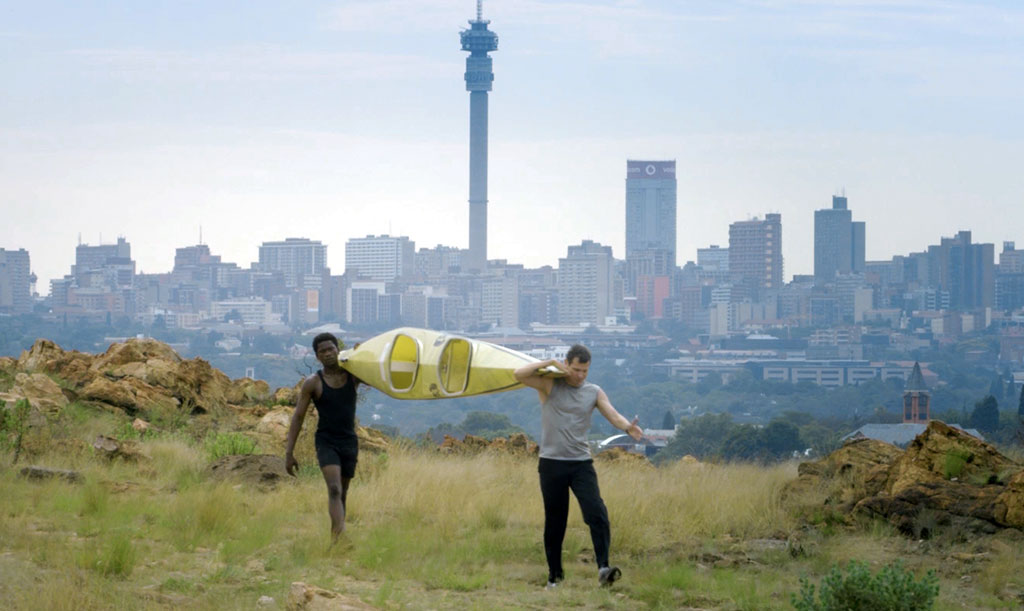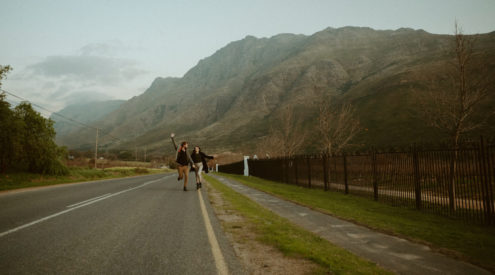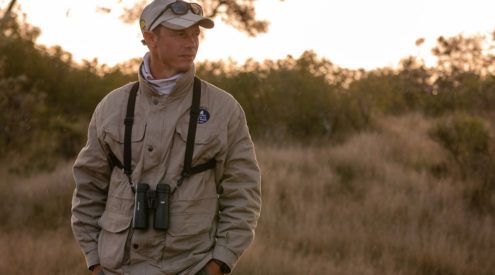The Dusi Canoe Marathon is one of the toughest races in Africa, and a true story, inspired South Africa’s first-ever outdoor adventure film. We spoke to lead actors Lemogang Tsipa and Grant Swanby, stars of Beyond the River about a film inspired by a true-life story of two men who went for gold in Africa’s toughest river race. The movie comes at cinemas out in April.
Watch the trailer:
You met Piers Cruikshanks and Siseko Ntondini, the guys the movie is based on. What was your impression of them?
LT (Lemogang Tsipa): They were great to work with. They’re easy-going, fun and so eager. Piers is cool. He was on set to be Grant’s double – he even assisted with gear.
How intense was the training and preparations?
GS (Grant Swanby): On South African films we don’t have the budget to take a year off to work out and prepare. We had to work and try find time to train. We were cast in the film first, then we had to learn how to canoe. We weren’t canoeists before.
LT: I did quite a bit of training. It was not just canoeing but fitness in general. When we were cast, I was a regular fitness guy, but it’s very different when you have to paddle for 12 hours on set as opposed to a jog around the block. Grant and I tried to train together as often as we could, but there times when we had to work [on other jobs]. When Grant was working, I’d be alone at the Muizenberg Canoe Club. It was tough for a guy who doesn’t canoe, especially when I had to teach myself if my instructor couldn’t make it.
GS: It was important to us as actors to look as authentic as possible. It was good to aquire a new skill, and it was also important to be truthful to the script.
LT: We had Shaun Rubenstein showing us the ropes. He is an Olympic canoeist and also a gold Dusi winner. When he was in the boat with us, he was doing all the power work and balancing for us.
LT: It was great having someone at his level right from the start, to show us how to canoe properly. Lemo and I had the chance to get to know each other and discover each other’s strengths and weaknesses. We put in a lot of time on our own, too, to work to get things right.
LT: Even though we weren’t shooting in sequence, we were getting better at canoeing as we were shooting. We shot many scenes of us training first, then the actual racing bits towards the end. By the time we did the race, we were more comfortable in the water and the boat.
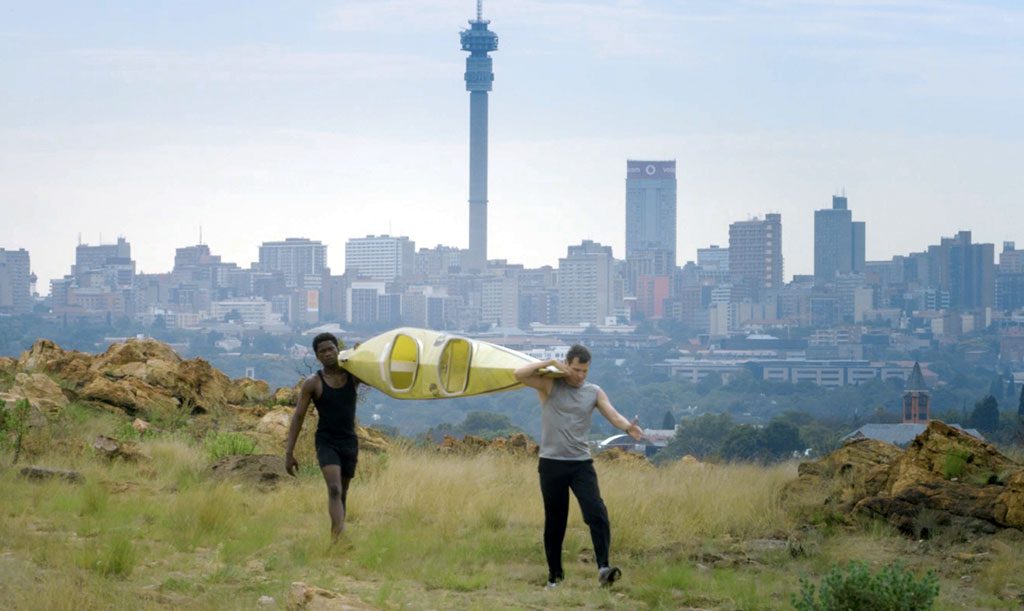
What’s the secret to running while carrying a canoe?
LT: The strategy is opposite feet – it’s a rhythmic thing. I step with my right foot and Grant steps with his left foot. Our heads are on opposite sides of the boat on our shoulders. Whoever is in front leads the way. When I feel Grant’s rhythm and he jumps, then I jump. The boat is heavy; it’s not unbearable when you lift it off the ground, but after a 500-metre run you begin to feel it. Some Dusi racers are better runners so they strategically run faster to get to the water, which gives a headstart.
GS: When you first pick up the boat it’s fine, but then there are also things to bear in mind such as entering and exiting the water, which requires good technique. If you’re doing everything at top speed, it has to be practised, almost like a Formula 1 tyre change where everyone knows exactly what they’re doing. Winning or losing comes down to the strategy you put into place.
Were there any unforeseen problems?
GS: One of the major obstacles in the filming process was the drought. A lot of the rivers in KwaZulu-Natal dried up, so we had to shoot on the Vaal River because there wasn’t enough water.
LT: At the one river location, the water came up to our ankles – it was just puddles. They released some water [out of a dam] for a race that was taking place on the Msunduzi River at the same time we were filming, so we followed behind the racers and took advantage of that water. The water levels go up and stay up for two days before drying again.
GS: Environmentally, we couldn’t waste water. The water releasing [for the race] is structured so it doesn’t take away too much drinking water that the community needs.
After doing a movie like this, do you feel like you can take on anything in your own life?
LT: I think it’s a natural journey for an actor. We always play different roles. Being a performer, you always get pushed out of your comfort zone. You will learn to believe in yourself. I recently had an audition for a film in German and I did it. I had to learn the language. It’s all part of small building blocks. You don’t realise how difficult something is, but being able to focus and push yourself is good.
GS: Learning as much as you can, you can overcome and achieve anything. If you put your mind to something, you can do it. Self-belief is universal.
What did you think of the shooting locations?
LT: There’s a lot of beauty in the Valley of 1000 Hills. It is one of the most beautiful places in the country … remarkable.
GS: I grew up in Durban. I’ve been familiar with the Dusi since I was a child, so it was wonderful for me to be part of this. Towards the end of the film, there’s a beautiful shot where the camera lifts up and you can see where I grew up in Durban. It definitely made me proud to come from this part of the world.
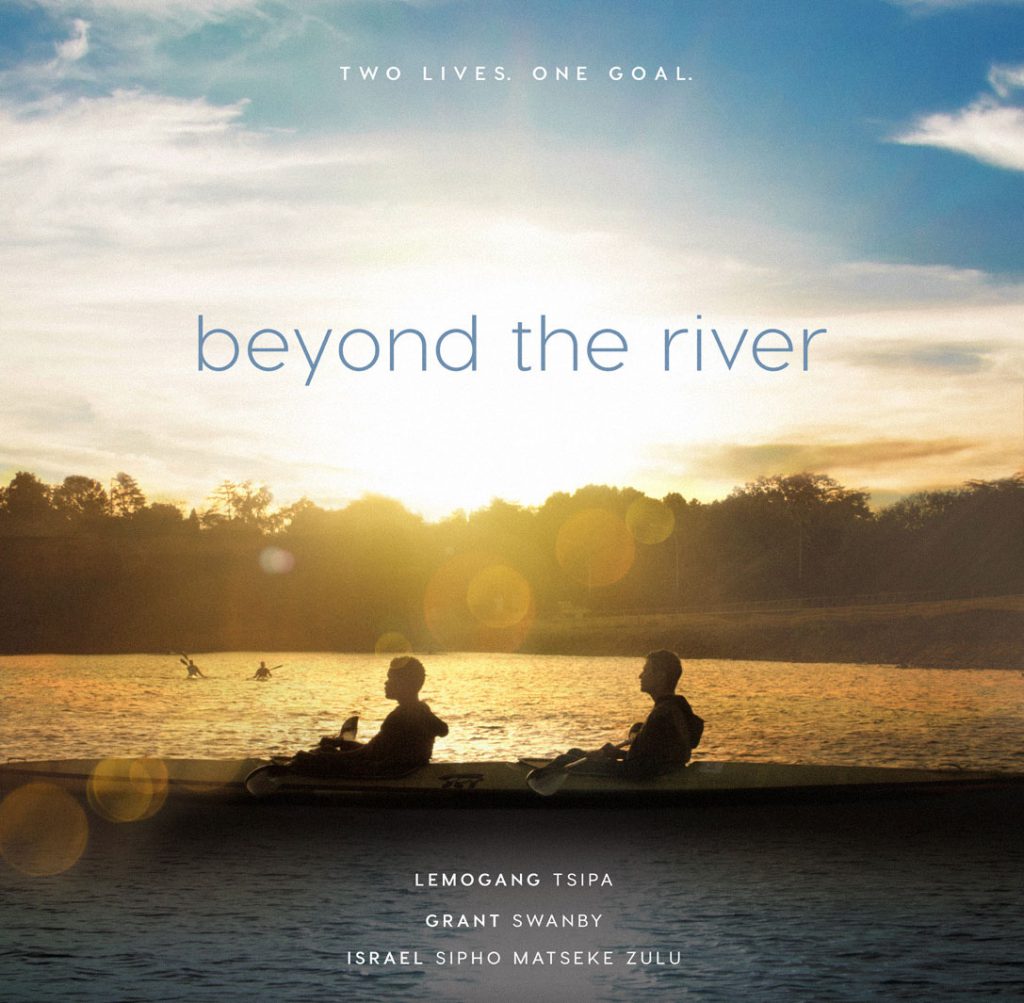
What can someone watching the movie take away from it?
GS: The film is really about trust and listening to each other in South Africa. It’s about unity. The story must be told. Everything we’re hearing in the press at the moment is divisive. It feels like this country is so fractured and nobody gets along. We also see, with regards to decision making, it’s important to trust and understand somebody else. Once we trust one another, the country will be in a much better position.
LT: I’ve never seen a canoeing film in South Africa. There are unique elements in the movie – it definitely explores many places that haven’t been explored enough, but it was important to us to keep the message universal so that people can relate to it.
GS: There’s a guy whose name I have to mention: Brad Fisher. He is an absolute unsung hero. He’s a successful businessman who believes in development paddling. He started the Soweto Canoe Club. He’d pick up young men who were committing crimes and didn’t have much to aspire to and give them hope. Brad would take them to Emmerentia Dam to canoe. There’s a character based on him in the film.
What are your hopes for the movie?
LT: Obviously I hope it does really well. I hope it will inspire South Africans to watch our own films. The more people go to the cinema to support, the better films we can make – more investors will throw money into the local industry. Our storytelling shouldn’t just be for South Africans. It should be for the world.
GS: People should go see the film. There are beautifully captured shots. It’s probably one of the best films that’s been made in South Africa. We always think ‘overseas is better’. But the actors are all South African, the producers are South African and it’s something to be proud of. It’s an important film for South Africa – socially and politically. It’s a story full of hope.
So, would you take part in the real Dusi Marathon?
GS: We could probably do it, but whether or not we’d want to would be the question! I am more of a cycling and running guy.
LT: In training I couldn’t steer, and as the person who sits in the front of the boat, that’s what you do. That was a big challenge for me and if we were to do the Dusi, I definitely wouldn’t sit at the front.
• Beyond the River will be in cinemas from 28 April.
A version of this story first appeared in the March 2017 issue of Getaway magazine.
Our March issue features a self-catering trip to the Seychelles that you can afford, a secret Karoo retreat, learning to fly-fish in Rhodes and a Joburg road trip for beer lovers.
